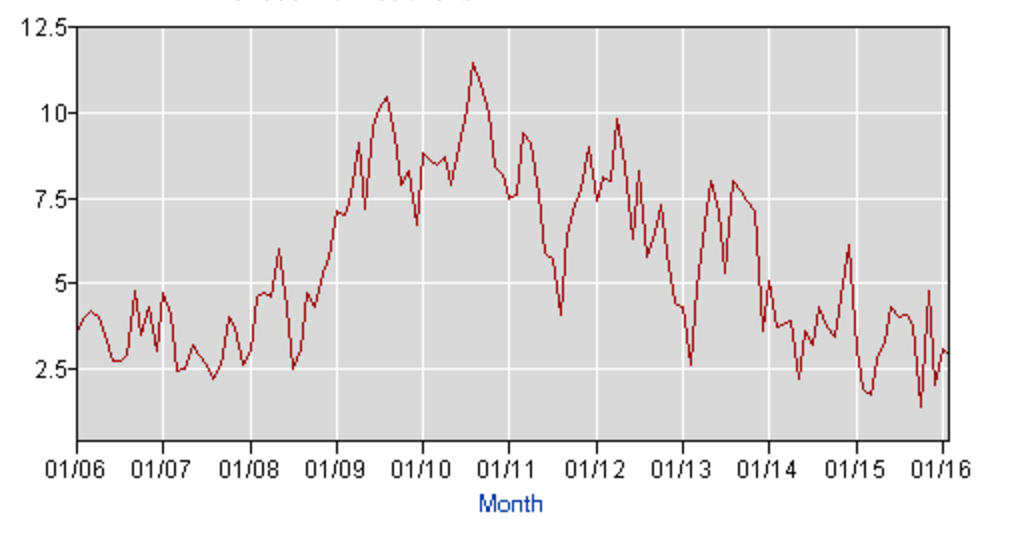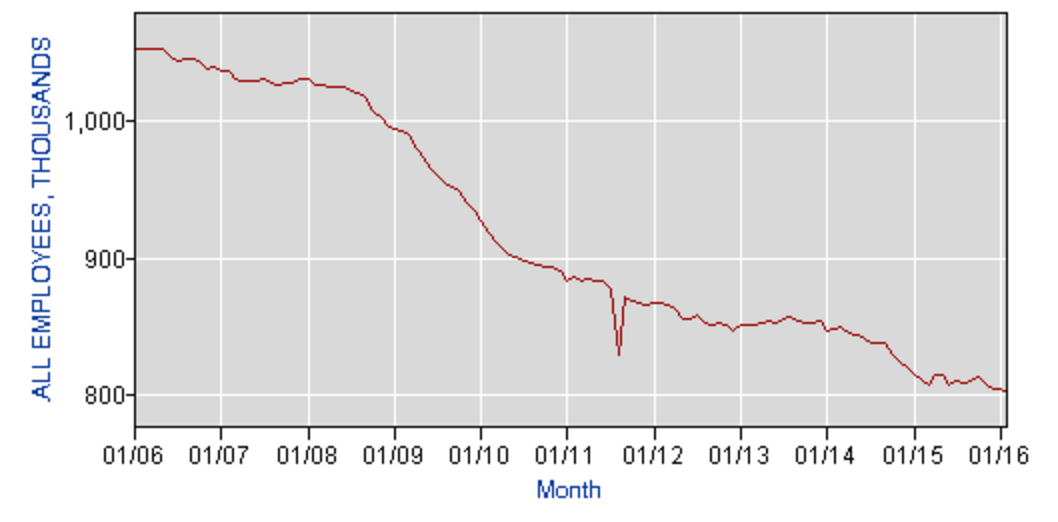The telecommunications workforce, as tracked by the U.S. Bureau of Labor Statistics, saw a small decrease in its unemployment rate coupled with a decline in total number of employees.
In February, the telecom unemployment rate declined to 2.9% from 3.1% in January. Since January 2015, the low point in unemployment rate came in October at 1.4%, while the high came in November at 4.8%.

The total workforce declined to 801,900 people in February, compared to 804,100 in January. Compared to February 2015, the telecom workforce has shrunk from 811,300 people.

For purposes of the BLS tracking, the telecommunications subsector includes people who work in telephony, voice over IP, cable and satellite television distribution; Internet access; and telecom reselling. The BLS describes the telecom subsector as “primarily engaged in operating, and/or providing access to facilities for the transmission of voice, data, text, sound and video.”
The latest BLS figures peg the January 2016 average pay of all telecom employees at $31.39 per hour with an average work week of 38.3 hours; that’s weekly earnings of $1,202.24. The average hourly pay represents a very small – two cents – increase since December. The BLS also tracked a less than one hour increase in average weekly hours worked.
The BLS tracks monthly labor statistics for a variety of sectors, including telecom. For the telecom-specific entries, as well as back data, click here.

